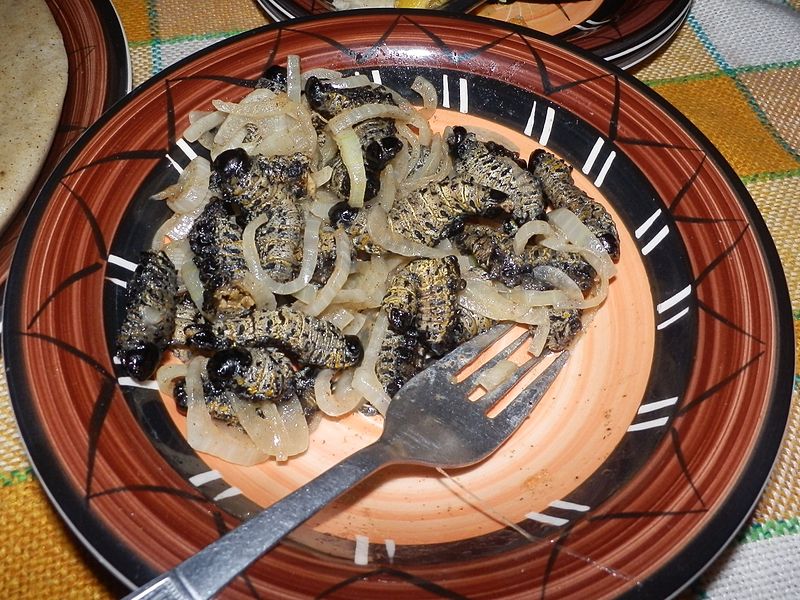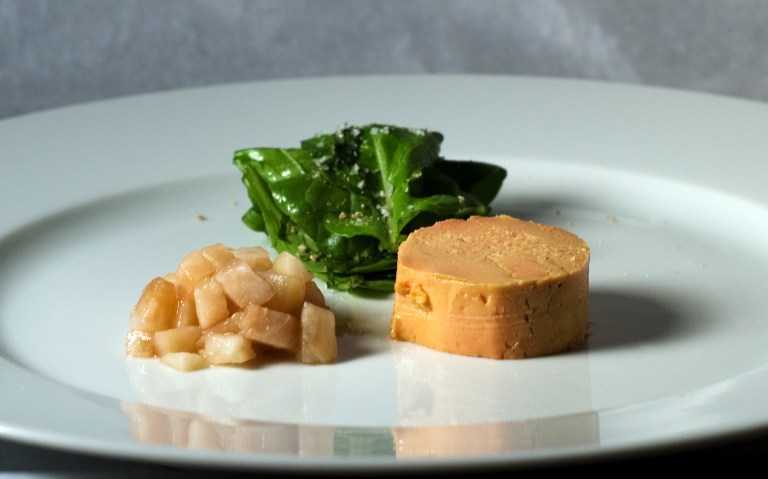11 Bizarre Foods From Around The World Only Enjoyable For Those With The Most Adventurous Palate
Some people like to stick to the same old food when travelling the world. You know the kind, those who insist McDonald’s, KFC or a good old all day English breakfast are the be-all and end-all of tasty cuisine, far safer than dabbling with the local delicacies on offer. While you can get that type…

Some people like to stick to the same old food when travelling the world. You know the kind, those who insist McDonald’s, KFC or a good old all day English breakfast are the be-all and end-all of tasty cuisine, far safer than dabbling with the local delicacies on offer. While you can get that type of food in many places in this world, seasoned travellers (excuse the pun) might like to try something a little different.
For those with a little adventure in their palate, here is a selection of some really weird and wonderful foods that are actually worth a try (if you have the stomach for it).
1. Scotland – Haggis

Source: Imgur
Most people have heard about haggis, but how many have actually tried it? Dating back from ancient times, haggis is a savoury pudding which basically contains sheep’s innards (liver, lungs and heart), all minced together with onion, suet, spices, oatmeal and salt. The concoction is then mixed with a hearty stock and traditionally encased in the sheep’s stomach (although these days an artificial casing is often used).
Apparently the resulting dish has a great nutty texture along with a delicious savoury flavor and can be considered part of a “waste not, want not” diet. Others might prefer to have a more traditional roasted leg of mutton or lamb or some more tender chops!
2. Middle East, Eastern Europe, and Turkey – Khash

Source: Imgur
Continuing with the “waste not, want not” trend, in various countries of the Middle East, Eastern Europe and Turkey, Khash is a popular and apparently tasty dish.
This offering consists of a boiled cow’s head and, occasionally, the feet. While this was originally simply a nutritious winter food, nowadays Khash is considered a delicacy and is often enjoyed as a festive meal in the winter months.
However, before planning on tucking into this delight bear in mind that certain countries have restrictions on when it should be consumed. In Armenia, for instance, you can only enjoy Khash in months that contain an “r” in their name. Awkward! However, elsewhere it can be eaten pretty much any time.
3. Iceland — Hákarl

Source: Imgur
When visiting Iceland’s bleak and fascinating shores, a must-try dish is the popular Hákarl. The meaning of the name of the dish and its content is “shark.” This is a national dish which consists normally of a Greenland shark, although other sharks can be used, cured with a special fermentation process and hung out to dry or covered in sand, gravel and stones for four to five months.
Normally served as part of special events in Iceland, the dish is, however, available all year round. Not surprisingly, it is said that Hákarl is an “acquired taste” as it tends to have an ammonia-rich smell and fishy flavor.
4. Sweden – Surströmming

Source: Imgur
On the subject of almost rotten fish, we now head to Sweden where Surströmming can be enjoyed with gusto. Surströmming, which means “soured herring” in Swedish, has been part of the staple cuisine of northern Sweden for around 400 years.
The raw sea herring is stored with just enough salt to stop it from rotting and is fermented for a minimum of six months. This process gives the fish a particularly strong smell and rather an acidic flavor. When opening a can of this fishy delight, preferably do it in the open air as the smell can be somewhat, shall we say, overwhelming.
5. China – Century Egg or 100-year-old Egg

Source: Imgur
While most people think chop suey or sweet and sour pork when ordering Chinese cuisine, the country has some far more original and unusual food to offer.
The century, or 100-year-old egg, isn’t really that old, of course, but by the looks of it, you can see where it gets its name. Basically they take duck, quail or chicken eggs and preserve them in a mix of ash, clay, quicklime, salt and rice hulls for a period lasting from several weeks to even months.
In the process, the yolk of the century egg turns to a remarkable green or grey color and the white becomes a translucent brown jelly. Reportedly these eggs have a creamy consistency along with a strong odor of ammonia and sulphur. This is probably yet another dish best to eat in the outside fresh air!
6. China – Bird’s Nest Soup

Source: Imgur
Staying in China, let’s give that famous dish, bird’s nest soup a try. While most birds use sticks and twigs to create their nests, various species of Swiftlet in China create their white and red nests using interwoven strands of salivary laminae cement. Basically the bird’s spit.
This substance is considered to be highly rich in nutrients, including iron, calcium, magnesium and potassium and according to Chinese tradition has many health benefits. It’s also incredibly expensive.
The substance is not only used for bird’s nest soup as it can be used in many other sweet or savoury dishes. It can be cooked with rice to make bird’s nest congee (boiled rice) or made into a bird’s nest jelly, which can be purchased in jars as a commercial product in supermarkets.
Apparently the taste of the bird’s nest substance is “exquisite” and the Chinese rarely add other spices or flavors to the blend as it may ruin the experience.
7. Cyprus – Koupes

Source: Imgur
Koupes are a strange looking snack or finger food from Cyprus, often served as part of a mezes dish (or small appetizer plate). The pies are made with fine cracked wheat or ground wheat (bulgar) and contain minced onions and finely ground pork meat, shaped into patties or balls that can be either fried or baked. They are difficult to make yourself, but while touring Cyprus are readily available for a snack while you wander the streets.
The finished pies are always served with fresh lemon quarters and it is recommended to add a few drops of lemon juice to each bite. They may look slightly unappetizing, but these ones are definitely worth a try.
8. South Africa, Namibia and Zimbabwe – Mopane Worms

Source: Imgur
Originally a source of protein for poor people living in rural areas, mopane worms have become a traditional treat or snack which can often been found tinned in the rural markets.
Basically mopane worms are caterpillars that are harvested in the wild by the women and children. Once picked, their tail end is pinched to rupture its innards and they are then squeezed like a tube of toothpaste to expel their slimy, green innards. Lovely.
Traditionally the caterpillars are then dried in the sun or smoked to give them extra flavor. They can then be enjoyed raw as a crisp snack, or fried until crunchy with onions, tomatoes and spices and served with the local corn porridge. Some people say they taste just like butter. Yum. At least you get some extra protein from the experience.
9. South Africa – Bunny Chow

Source: Imgur
Also found in South Africa, but part of a more normal culinary route, the city of Durban in KwaZulu-Natal offers a great treat. Bunny chow. Bunny chow has absolutely nothing to do with bunnies however.
Durban has a large Indian community and the dish is thus derived from Indian cuisine. While its origins are disputed, bunny chow is a fast food dish made by hollowing out a loaf of bread and filling it with beef or mutton curry. One humongous sandwich, if you will.
Thought to have first been popular with migrant Indian workers in the sugar cane plantations as a convenient method of carrying their lunch, it is now a popular snack available on most street corners in the city. With so many South Africans heading to London, apparently this popular dish is becoming readily available on those streets too. Very tasty and enjoyable, but beware. Sometimes that curry is super hot!
10. Japan – Shiokara

Source: Imgur
This is one dish that even some native Japanese find to be an acquired taste. Basically shiokara consists of the raw viscera (i.e. innards) of various different marine animals, mixed into a brown viscous paste, mixed with 10 percent salt and 30 percent malted rice and stored in a closed container. It is then fermented for anything up to a month.
The flavor has been compared to cured anchovies, although the texture tends to be slimy. According to Wikipedia one of the best methods of “enjoying” this treat is to gobble it down in one big gulp, followed by a hefty shot of neat whisky. Considering what the dish consists of, several shots of whisky sounds like an even better idea.
11. Cambodia – Fried Spiders

Source: Imgur
Last, but definitely not least, this is probably not the best dish for an arachnophobe, i.e. someone with a phobia about these horrendous eight-legged critters.
Although it is thought to have been started by people starving during the Khmer Rouge years, fried spider is now considered a tasty national delicacy, rapidly becoming popular with the passing tourist trade. They apparently breed the spiders in holes in the ground, toss them in a fragrant mixture of sugar, salt, MSG and crushed garlic and then fry them in oil until they are crispy and fragrant.
Those that have dared to eat the snack say the flavor is a little bland, something like a cross between cod and chicken, and while those long legs have little meat on them, the head and body apparently contain a delicate white meat. Others have recommended avoiding the abdomen of the spiders, which consist of the arachnid’s organs and excrement. Lovely.
Having taken a tour of just a few of the weird and wonderful dishes on offer all over the world, it can only be hoped that your appetite has been pleasantly whetted. Viewing some of the images, however, might be more useful to those not looking for temptation, but suffering through a strict diet! ![]()




